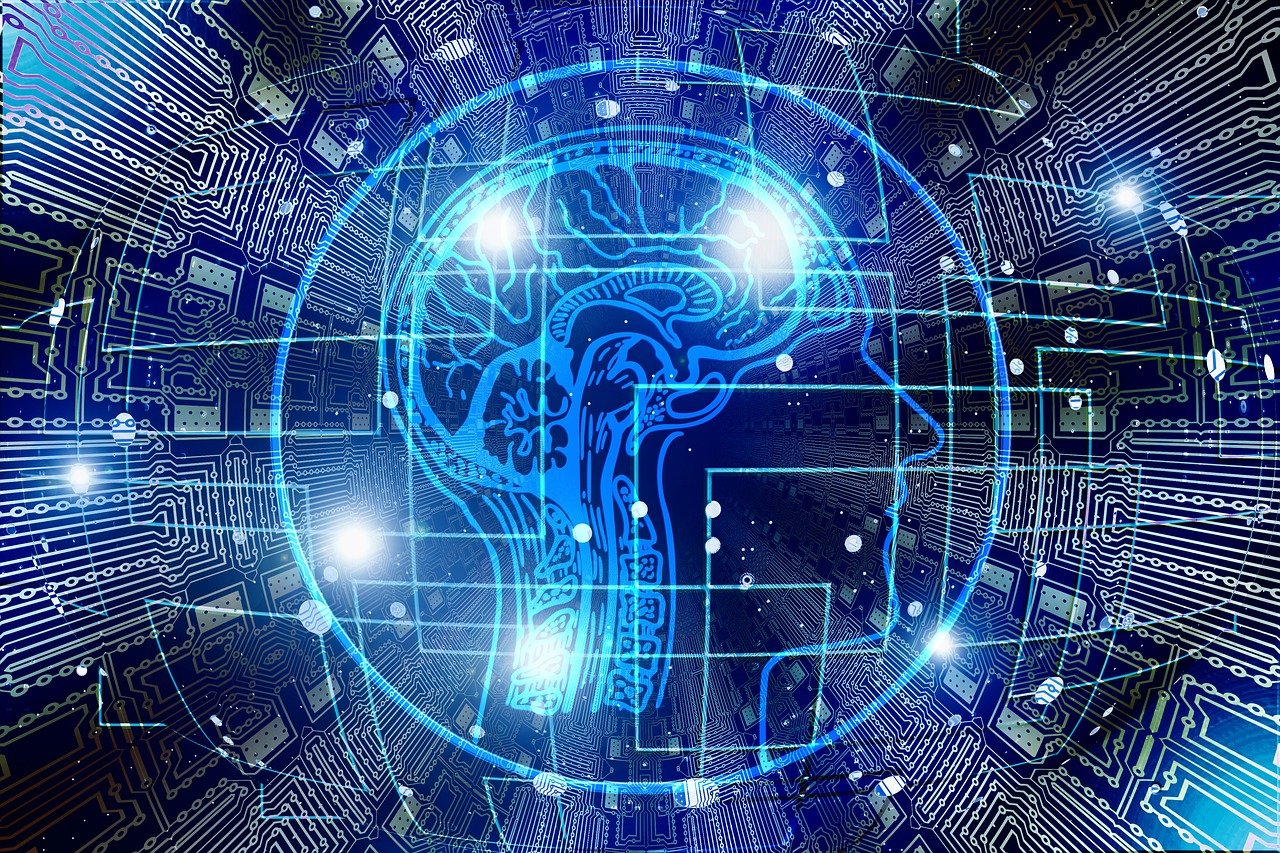Mastering AI: A Beginner’s Guide to Understanding and Utilizing Artificial Intelligence

July 21, 2023
Artificial Intelligence (AI) has emerged as a transformative force, revolutionizing industries and reshaping the way we live and work. While AI may seem complex and intimidating, this comprehensive beginner’s guide aims to provide a detailed understanding of AI, explain its fundamental concepts, explore its applications across various domains, and offer guidance on how to harness its power. Whether you’re a technology enthusiast, a business professional, or simply curious about this rapidly evolving field, this article will serve as your comprehensive introduction to the world of AI.
How does artificial intelligence help us?
What is Artificial Intelligence?
Artificial Intelligence refers to the development of computer systems that possess the ability to perform tasks that would typically require human intelligence. AI encompasses a range of techniques and technologies, including machine learning, natural language processing, computer vision, and robotics. These technologies enable machines to learn from data, adapt to new information, and make decisions or perform tasks with minimal human intervention.
AI can be categorized into two main types: Narrow AI and General AI. Narrow AI refers to systems designed for specific tasks, such as image recognition or speech synthesis, while General AI aims to replicate human-level intelligence and reasoning across multiple domains.
Machine Learning: The Backbone of artificial intelligence
Machine Learning (ML) is a subset of AI that focuses on algorithms and statistical models that allow machines to learn from data and make predictions or decisions. ML algorithms are designed to identify patterns, learn from examples, and improve their performance over time.
Supervised Learning
Supervised learning is a common approach in ML, where models are trained using labeled data, meaning data that has been manually annotated. This labeled data serves as the ground truth, allowing the model to learn from known examples and make predictions on new, unseen data. In this process, the model learns to map input features to corresponding output labels. Some popular supervised learning algorithms include decision trees, random forests, support vector machines (SVMs), and neural networks.
Unsupervised Learning
Unsupervised learning involves training models on unlabeled data to discover hidden patterns and structures. Unlike supervised learning, there are no predefined output labels to guide the learning process. Instead, the algorithms focus on finding meaningful representations or clusters within the data. Clustering algorithms, such as k-means and hierarchical clustering, group similar data points together. Dimensionality reduction techniques, such as principal component analysis (PCA) and t-SNE, reduce the dimensionality of the data while preserving its essential structure.
Reinforcement Learning
Reinforcement learning (RL) is a technique where an AI agent learns by interacting with an environment and receiving feedback in the form of rewards or penalties. The agent aims to maximize cumulative rewards over time by taking appropriate actions in different states of the environment. RL algorithms employ trial and error to learn optimal policies through exploration and exploitation. Examples of RL applications include training agents to play games, control robotic systems, or optimize resource allocation in dynamic environments.
Deep Learning
Deep learning is a subset of ML that utilizes neural networks with multiple layers to process and analyze complex data. Neural networks are composed of interconnected nodes, known as neurons, which mimic the functioning of biological neurons in the human brain. Deep learning has gained significant attention due to its ability to automatically learn hierarchical representations from the data, enabling the extraction of intricate features and patterns.
Convolutional Neural Networks (CNNs) are widely used in computer vision tasks such as image classification and object detection. Recurrent Neural Networks (RNNs) are specialized for sequential data, making them well-suited for natural language processing (NLP) tasks like machine translation and sentiment analysis. Additionally, advanced architectures like Transformers have proven highly effective for tasks involving sequences, such as language generation and text summarization.
Deep learning models require substantial computational resources for training due to the increased complexity and the need for large datasets. However, they have achieved remarkable success in various domains, including image recognition, speech synthesis, language translation, and autonomous driving.
Transfer Learning
Transfer learning is a technique that leverages pre-trained models, often trained on large-scale datasets, and fine-tunes them for specific tasks or domains. This approach allows the reuse of learned features and reduces the need for extensive training from scratch. Transfer learning has proven effective in scenarios where the availability of labeled data is limited. By utilizing pre-trained models, even individuals with smaller datasets can benefit from the state-of-the-art performance achieved by models trained on vast amounts of data.
Model Evaluation and Optimization
Once a model is trained, it is crucial to evaluate its performance and optimize its parameters. Common evaluation metrics include accuracy, precision, recall, and F1 score, depending on the specific task and dataset characteristics. To improve model performance, techniques such as hyperparameter tuning, regularization, and ensemble methods can be employed.
Hyperparameter tuning involves adjusting the parameters that control the learning process, such as the learning rate or the number of layers in a neural network, to optimize performance on the validation dataset. Regularization techniques, such as L1 or L2 regularization, help prevent overfitting by adding penalties to the model’s complexity. Ensemble methods combine multiple models to make predictions, leveraging the diversity of individual models to improve overall accuracy and robustness.
Applications of AI
AI has permeated various industries, transforming the way businesses operate and enhancing the quality of our lives. Here are some notable applications of AI:
Healthcare AI aids in diagnosing diseases, analyzing medical images, and predicting patient outcomes. Machine learning algorithms can analyze vast amounts of patient data to identify patterns and make accurate diagnoses. AI-powered systems also enable personalized medicine by tailoring treatments to individual patients’ needs. Furthermore, AI plays a crucial role in drug discovery and development by analyzing vast molecular data and predicting potential drug candidates.
Finance AI algorithms analyze vast amounts of financial data to detect fraudulent transactions, provide investment recommendations, and automate trading processes. Machine learning models can learn from historical market data and identify patterns to make predictions about stock prices or market trends. AI-powered chatbots assist customers with their banking inquiries, making financial services more accessible and efficient.
Transportation
Self-driving cars are a prominent application of AI in the transportation industry. AI algorithms analyze sensor data, including cameras, radar, and Lidar, to navigate and make decisions on the road. This technology enhances safety, reduces accidents caused by human errors, and improves overall efficiency. Intelligent traffic management systems leverage AI to optimize traffic flow, reduce congestion, and minimize travel time.
Customer Service
Chatbots and virtual assistants powered by AI provide instant support, answer inquiries, and handle customer interactions. Natural language processing (NLP) algorithms enable these AI systems to understand and respond to human language, improving the overall customer experience and freeing up human agents for more complex tasks. Chatbots can be integrated into websites, messaging platforms, and call centers, providing round-the-clock assistance.
Manufacturing
AI-driven automation streamlines production processes, optimizes supply chains, and enables predictive maintenance. Robots and intelligent machines collaborate with human workers to enhance productivity and efficiency. Machine learning models can analyze sensor data from machines to detect anomalies and predict maintenance needs, reducing costly downtime and improving overall operational efficiency.
Education
AI-powered adaptive learning systems personalize education by tailoring content and pacing to individual students’ needs. These systems analyze student performance data and provide personalized feedback and guidance. Intelligent tutoring systems leverage AI to simulate a one-on-one tutoring experience, assisting students in mastering various subjects and improving learning outcomes.
My AI: Discover the Artificial Intelligence on Snapchat
Ethical Considerations
As AI becomes increasingly powerful and pervasive, addressing ethical considerations becomes crucial. It is important to ensure responsible development and use of AI. Some key ethical considerations include:
Privacy
AI systems often process vast amounts of personal data. Safeguarding privacy and ensuring secure data handling practices is essential. AI developers must adhere to data protection regulations and implement privacy-preserving techniques.
Bias
AI systems can inadvertently perpetuate biases present in the data they are trained on, leading to unfair outcomes. Developers must strive to eliminate biases and ensure fairness in AI algorithms. Robust data preprocessing, diverse training data, and regular audits are some ways to mitigate bias.
Transparency
AI algorithms can sometimes be complex and opaque, making it challenging to understand the reasoning behind their decisions. Enhancing transparency in AI systems is crucial for building trust and accountability. Techniques such as explainable AI aim to make the decision-making process of AI models more interpretable and understandable.
Job Displacement
AI automation may disrupt job markets, leading to job displacement. Preparing for this transition and exploring opportunities for retraining and upskilling is important. Policies and initiatives that promote a smooth transition, such as reskilling programs and social safety nets, can help mitigate the negative impact on employment.
Getting Started with AI
If you’re interested in exploring AI further, here are some steps to get started:
Learn the Basics
Begin by familiarizing yourself with AI concepts, including machine learning, neural networks, and data analysis. Online courses, tutorials, and books are excellent resources to gain foundational knowledge. Platforms like Coursera, Udacity, and edX offer comprehensive AI courses taught by leading experts.
Practice with Real-World Examples
Apply your knowledge by working on small AI projects or participating in coding competitions. Platforms like Kaggle offer datasets and challenges to help you develop your AI skills. Implementing machine learning algorithms using popular libraries like TensorFlow or PyTorch can provide hands-on experience.
Join AI Communities
Engage with fellow AI enthusiasts and professionals through online forums, meetups, and social media groups. Sharing ideas, asking questions, and participating in discussions can accelerate your learning journey and provide valuable insights. Platforms like GitHub allow you to collaborate on open-source AI projects.
Stay Updated
AI is a rapidly evolving field, so staying abreast of the latest research, industry trends, and breakthroughs is crucial. Follow reputable AI blogs, attend conferences, and explore research papers to stay informed and connected to the AI community. Platforms like arXiv and Google Scholar are great resources for accessing the latest research papers.
Artificial Intelligence on Developing Diffent Algorithms
The future of artificial intelligence
Artificial Intelligence has transcended the realm of science fiction and become an integral part of our lives. By understanding the basics of AI, exploring its diverse applications, considering the ethical implications, and actively engaging with the AI community, you can harness its transformative power to solve problems, streamline processes, and unlock new opportunities.
While this beginner’s guide provides a comprehensive introduction to AI, remember that AI is a vast and ever-expanding field. Embrace curiosity, continue learning, and let your passion for technology guide you on your journey to mastering AI. By staying informed, exploring hands-on projects, and collaborating with other AI enthusiasts, you can embark on an exciting path towards becoming an AI practitioner or leveraging AI to benefit your personal and professional endeavors.








